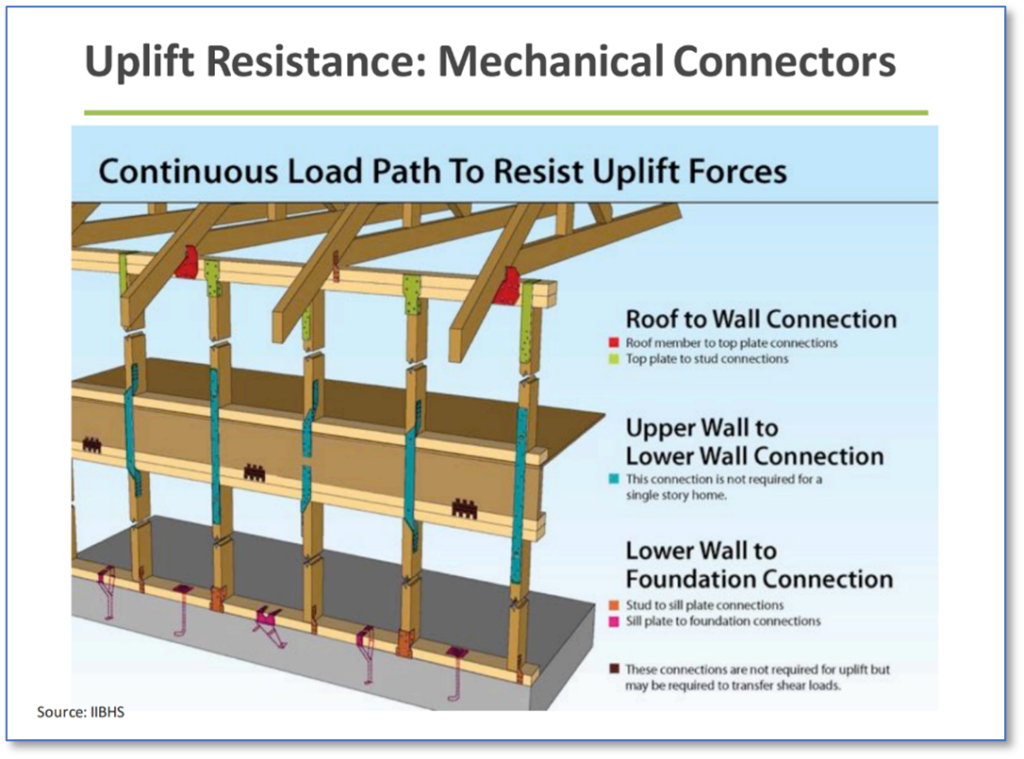
Wood-frame construction performs exceptionally well in earthquakes thanks to its lighter weight compared to concrete, multiple nailed connections, which allows flexibility to yield to movement, and repetitive framing members with numerous fasteners that provide redundant load paths.
In contrast, concrete or concrete block construction is far more rigid and more likely to fail in earthquakes if not properly built.
When building in seismic zones, construction design is important. Shearwalls should be braced with adequate fasteners to resist ?back and forth? seismic forces ? essentially creating stiff walls that won?t rack while facing ground motion.
Wood-frame construction in high wind zones: Mechanical fasteners are critical
Engineers and others in the construction and design community have long held proper construction practices are critical in high-wind zones, and wood-frame structures are just as resistant to high winds as concrete block if properly designed and built.
A critical consideration is the use of mechanical fasteners to provide a continuous load path throughout the structure to resist uplift. Importantly, fasteners should be adequate at every juncture.
Foundation to the sill plate, sill plate to the wall assembly, and wall assembly to the roof joists, etc. Consider it to be like a chain: One weak link jeopardizes the entire structure.

Proper design and construction is critical (regardless of the methods used)
With that said, engineers around the world have studied the efficacy of various construction methods in withstanding hurricanes and earthquakes for decades. To date, the most important overarching factor to security is properly designed and constructed structures, regardless of it being wood-frame or masonry.
Concrete-masonry, light-gauge steel and wood-frame construction are all good if properly designed and constructed to withstand expected forces and environmental conditions. But, improperly designed and constructed buildings often suffer catastrophic damage when subject to extreme loading conditions.
With masonry construction, failures are often the result of inadequate use of reinforcing steel (rebar), whether it be too few members or inadequate bond of the rebar to the masonry. With wood frame construction, failure is almost always a matter of inadequate use of fasteners.
In high wind zones, whether it be in the U.S. or the Caribbean, building codes address this. But whether those codes are followed and enforced is what matters. Too often, post-hurricane inspections reveal that while the codes were in place, failures occurred because they were not enforced. Some of the common causes damage include, but are not limited to:
- Inadequate nailing of built-up corners
- Inadequate nailing of wall shearing
- Inadequate nailing of roof sheathing
- Inadequate fastening of roof to walls
- Inadequate fastening to foundation
- Lack of shear diaphragms and fastening to transfer loads through a unified load path.
Learn more by checking out the SFPA’s Southern Pine Use Guide by clicking here!